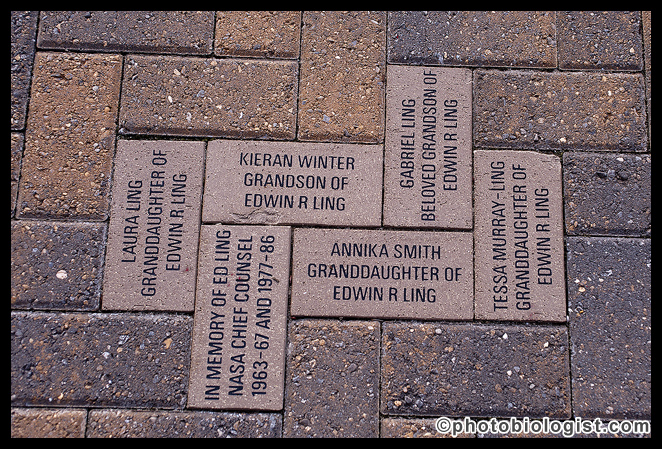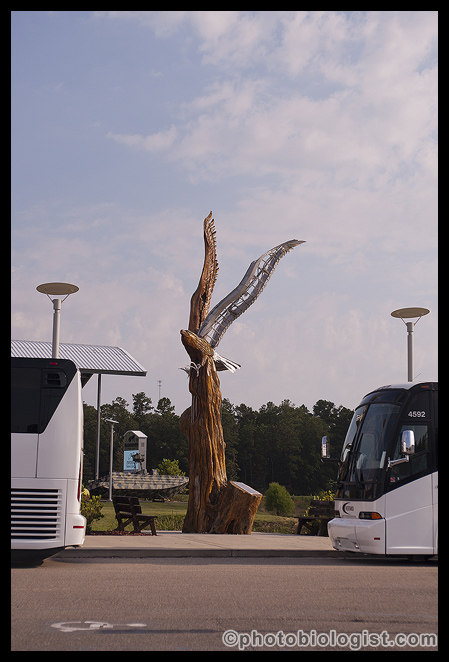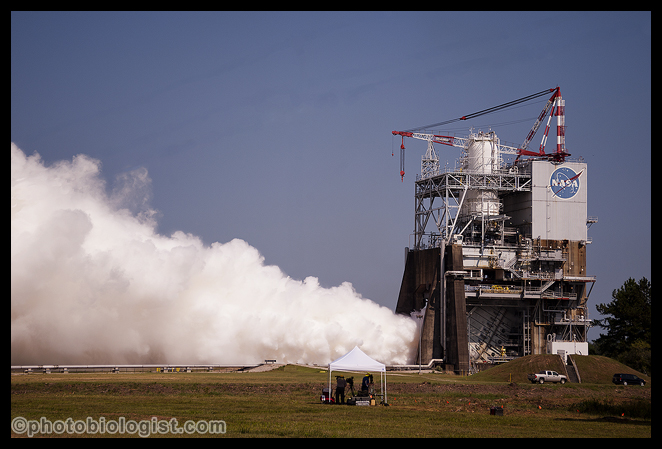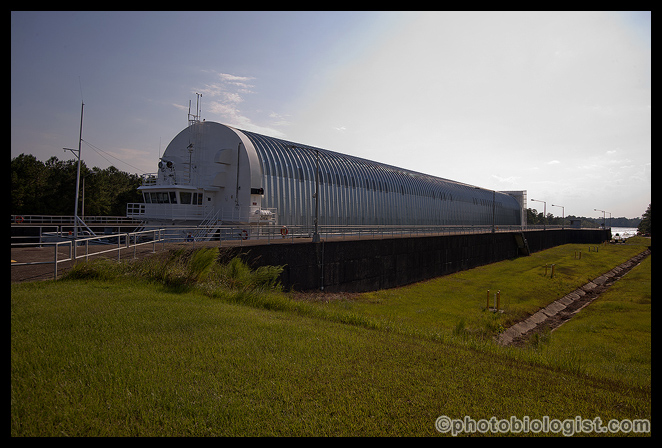On Thursday, August 13, 2015, I had a chance to go on-site at NASA’s John C. Stennis Space Center in western Hancock County, Mississippi to view and photograph a rocket engine test as part of a social media tour. I jumped at the chance for a whole lot of reasons. First, because it is a super cool opportunity to learn about some of our cutting-edge technology right in the area where I work! (In my day job I’m working with two different groups based out of Stennis Space Center, and monitoring easements on about 1/10th of the sound buffer zone surrounding the Center.) And, its where I started working full-time; when I graduate from Mississippi State University, I came down to Stennis Space Center (or to National Space Technology Labs as it was known then) and worked on a bunch of cool projects that involved all manner of flora and fauna, including endangered species, prescribed fire, and acid deposition. And, it was at Stennis that Kristin and I first met. My father-in-law worked at Stennis as well, and a set of bricks for him and each of his grandchildren is in place out in front of the Infinity Science Center.
When I arrived at the Infinity Science Center, I saw all the static displays out front – the rocket engines, the NOAA data bouys, the US Navy riverine craft, but it was the sculpture out front that caught my eye. Marlin Miller turned a lot of beach-front trees killed by Hurricane Katrina into really cool wildlife carvings using a chainsaw and a small sander. He has a sculpture of an eagle in front of the Infinity Science Center that is made from a single, large live oak with metal parts from Stennis engine test stands and Space Shuttle engines.
I checked in and got a bag of information and a personalized social media credential for the day.
The folks with NASA did a great job of preparing the social media users for the SR-25 rocket engine test. We listened to NASA employees and contractors and learned all kinds of details about the Space Launch System, and what it will do. We learned about the Orion capsule that will house human beings as we go beyond near-earth orbit and on to Mars and beyond. And we learned about the RS-25 engines from their history to how they are being adapted and used today.
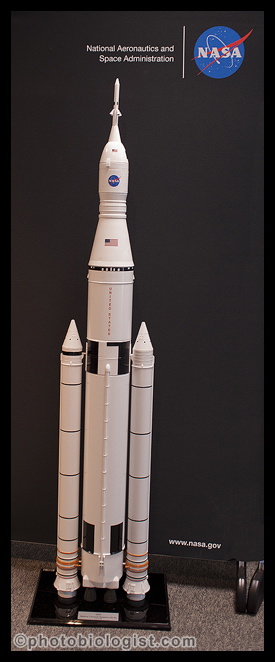
Scale Model of Space Launch System including the main rocket, Orion capsule, and pair of solid rocket motors.
The day was full data and specifications, many of them superlatives! The Space Launch System and the RS-25 rocket and all of the other parts needed to support the upcoming missions are truly amazing. If I remember correctly an RS-25 engine has four turbos, and each turbo generates 7,000 horsepower! The Space Launch System has 4 RS-25 engines at it’s base plus to solid rocket motors on the side – and it needs them to generate enough lift to get the 5.5 million pounds of mass off the earth and out of earth’s gravitational pull! The temperatures inside the engine are at extremes – the liquid hydrogen fuel is coming in at -425°F and at one point is separated from the products of it’s combustion at about +6,000°F by around 14 inches! The exhaust is leaving the engine at around 13 times the speed of sound! I only wish I could remember half the cool statistics that I heard.
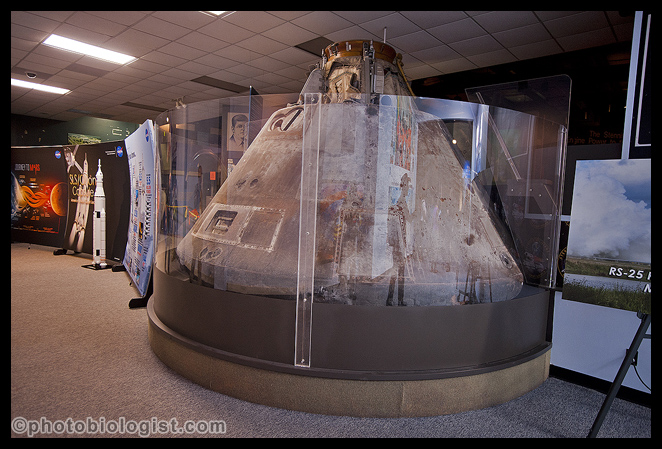
The presenters were challenged to find things we could understand to compare the SLS and the RS-25 to… Many times they used the Apollo program (represented by the Command Module for Apollo 4 that we saw!) or a sport-utility vehicle or a racing car.
We listened to a large number of presenters share information about NASA, the Space Launch System, the Orion capsule, the RS-25 engine, the support teams and companies.
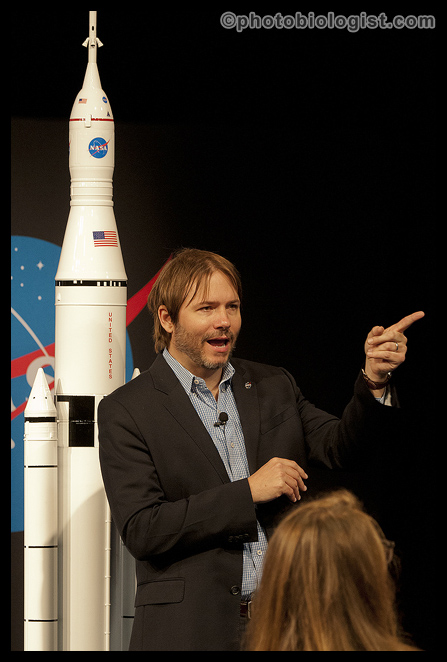
John Yembrick, NASA Office of Communication Social Media Manager, did a great job of preparing us to soak up a great deal of information.
The panels and speakers were the folks who were actually doing the job. It was very, very interesting to hear their individual parts and how well all those parts are adding up to the final product.

We had a surprise speaker, Dr. Dava Newman, NASA Deputy Administrator. It was her second time at a social media event.
We took a trip to the B-2 Rocket Engine Test Stand (currently undergoing renovation) so that we could see a huge test stand up close before watching an engine test from afar.
During lunch NASA Astronaut Dr. Jeanette J. Epps told us about astronaut training, potential future missions, and answered questions.
Then we headed back out for a tour of the rocket engine facilities and to the A-1 rocket engine test stand to watch, listen to and feel the RS-25 rocket engine test. We were about 1/4 mile from the engine test stand, and there was no doubt that something major was going on when the engine fired off! The ground rumbled, the sound was loud (even with hearing protection), and the immense plume of steam coming out of the test stand all gave evidence to the power of a single engine running in place.
After witnessing that impressive, immense display of technology and power, we climbed back on the air-conditioned bus to gulp bottles of cold water. We got just refreshed enough in a few minute ride to stop by the canals that were dug from the East Pearl River by the US Army Corps of Engineers to the test stands. Many of the rocket engines and parts are delivered by barge from the Pearl River up through a system of locks. In the lowest lock was the Pegasus – NASA’s barge. Pegasus recently underwent modification to enable it to carry the Space Launch System – that involved cutting the barge in half and adding 50′ section to the middle so that this enclosed barge is now 310′ long – just barely long enough and wide enough to carry the Space Launch System. A minor technological achievement to enable major technological achievements later!
All in all, a very long, technology-filled day!
#NASASocial #SLSFiredUp
